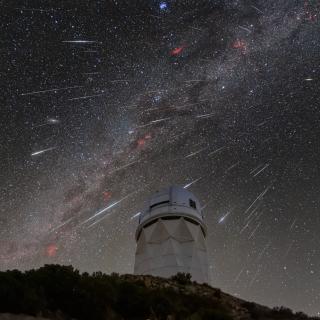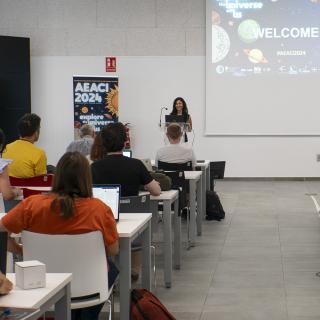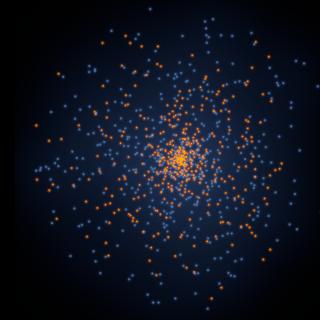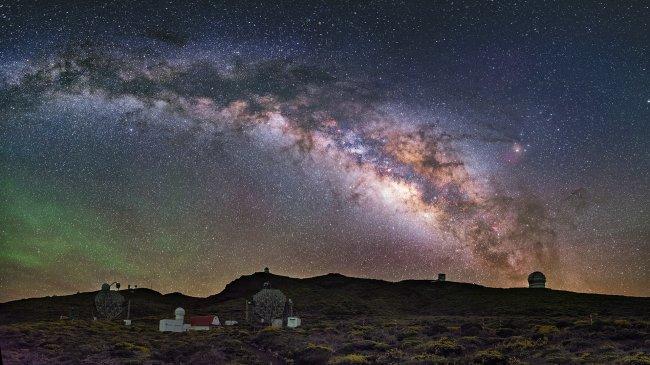It may interest you
-
 Gravity has shaped our cosmos. Its attractive influence turned tiny differences in the amount of matter present in the early universe into the sprawling strands of galaxies we see today. A new study using data from the Dark Energy Spectroscopic Instrument (DESI) has traced how this cosmic structure grew over the past 11 billion years, providing the most precise test to date of gravity at very large scales. DESI is an international collaboration of more than 900 researchers, included the Instituto de Astrofísica de Canarias (IAC), from over 70 institutions around the world and is managed byAdvertised on
Gravity has shaped our cosmos. Its attractive influence turned tiny differences in the amount of matter present in the early universe into the sprawling strands of galaxies we see today. A new study using data from the Dark Energy Spectroscopic Instrument (DESI) has traced how this cosmic structure grew over the past 11 billion years, providing the most precise test to date of gravity at very large scales. DESI is an international collaboration of more than 900 researchers, included the Instituto de Astrofísica de Canarias (IAC), from over 70 institutions around the world and is managed byAdvertised on -
 Yesterday saw the start of the 10th International School Astronomy Education Adventure in the Canary Islands (AEACI 2024) which will be celebrated during the full week in the IACTEC building in La Laguna (Tenerife), and which 65 teachers from 23 countries are attending. This school, organized by the Instituto de Astrofísica de Canarias (IAC) together with other scientific and educational institutions, has reached its tenth anniversary, and has given training in the teaching of astronomy to 600 teachers from all over the world. With the title “Explore the Universe with us” the AEACI 2024 hasAdvertised on
Yesterday saw the start of the 10th International School Astronomy Education Adventure in the Canary Islands (AEACI 2024) which will be celebrated during the full week in the IACTEC building in La Laguna (Tenerife), and which 65 teachers from 23 countries are attending. This school, organized by the Instituto de Astrofísica de Canarias (IAC) together with other scientific and educational institutions, has reached its tenth anniversary, and has given training in the teaching of astronomy to 600 teachers from all over the world. With the title “Explore the Universe with us” the AEACI 2024 hasAdvertised on -
 The existence of dark matter is likely one of the most perplexing problems facing the scientific community, and unraveling its nature has become one of the primary goals of modern physics. In simple terms, we do not know what dark matter is made of, despite accounting for 85% of all the matter in the Universe. A study led by the Instituto de Astrofísica de Canarias concludes that dark matter does not behave as described by the dominant paradigm, which states that dark matter particles only interact with each other and with ordinary matter through gravity. The IAC study reveals that darkAdvertised on
The existence of dark matter is likely one of the most perplexing problems facing the scientific community, and unraveling its nature has become one of the primary goals of modern physics. In simple terms, we do not know what dark matter is made of, despite accounting for 85% of all the matter in the Universe. A study led by the Instituto de Astrofísica de Canarias concludes that dark matter does not behave as described by the dominant paradigm, which states that dark matter particles only interact with each other and with ordinary matter through gravity. The IAC study reveals that darkAdvertised on
